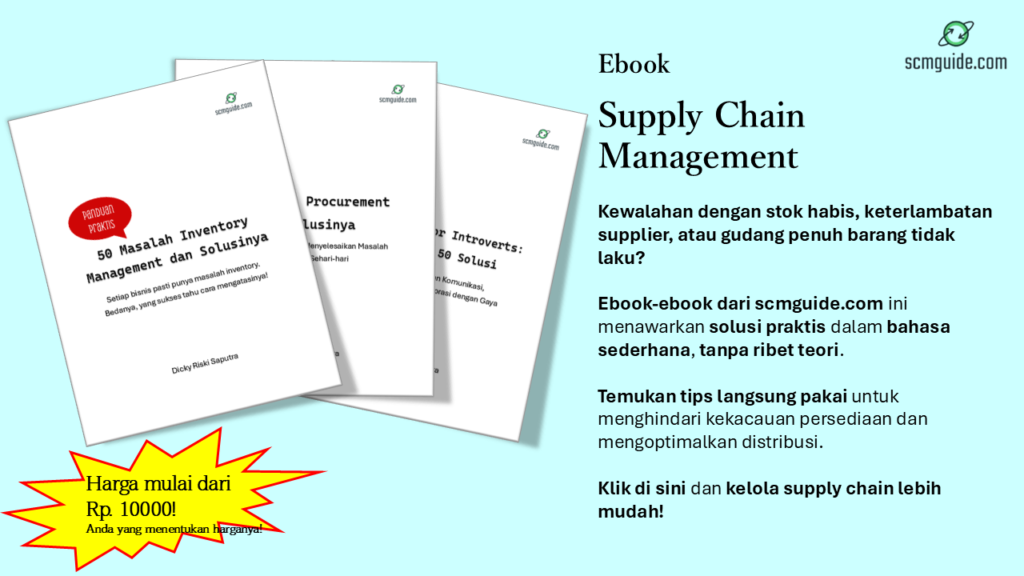Let’s face it: your business is running. Orders are coming in, products are being delivered, the factory floor is alive with motion, and the trucks are rolling out day after day. You can see activity everywhere. But here’s a question that might hit a little deeper: do you actually know if things are getting better or worse?
Because when there are no KPIs guiding the operation, you might not be managing. You might just be coasting. And that distinction matters more than most people realize. KPIs aren’t just corporate jargon. They’re not just fancy graphs in a PowerPoint. KPIs are the silent, powerful indicators that tell you where your business is headed. Whether you’re flying straight, climbing, or heading for a stall.
Before we go further into this topic, don’t forget to follow my LinkedIn account. You’ll get more helpful insights on supply chain management there.
Table of Contents
Things Look Fine Until They’re Not
The danger of not having KPIs is subtle at first. There’s no blinking red light or loud alarm. The business doesn’t suddenly grind to a halt. In fact, that’s the problem. Everything looks okay on the surface. But slowly, inefficiencies build up. Costs creep higher. Quality starts to slip. Customer complaints quietly increase. Inventory piles up or disappears faster than expected. And no one notices—not until there’s a serious issue.
Think of it like sailing without a compass. The sky is clear, the sea is calm, and the wind is strong. Everything feels good—until you realize you’ve been sailing in the wrong direction for days.
When you don’t measure, you can’t spot the warning signs early. You can’t see if your on-time delivery rate is sliding. You don’t know if lead times are lengthening. You can’t tell if a specific product is eating into your margin more than it should. By the time the effects become visible in your bottom line, the damage is already done.
Without KPIs, you’re essentially flying blind. The factory is running, but you don’t know if it’s running efficiently. Orders are going out, but you don’t know if customers are truly satisfied. People are working hard, but you don’t know if they’re working on the right things.
Managing by Assumption is a Dangerous Game
Let’s break it down. In a business without KPIs, decisions are made based on assumptions. The purchasing team assumes that buying in bulk is cheaper without checking carrying costs. The production team assumes that maximizing output is always a good thing, regardless of demand. The logistics team assumes that their current route planning is optimal because it worked last year. Sales assume that delivery performance is fine because they haven’t heard complaints.
It’s all guesswork.
And while those guesses might be right some of the time, they’re not reliable. They’re not scalable. And they certainly don’t work in the long term, especially when your business starts growing or facing more competition. KPIs turn those assumptions into data. They give you facts instead of feelings. They help you make decisions you can defend and repeat, not just gamble on.
You might also like:
- Why Your Supply Chain Recommendations Get Ignored and What to Do About It
- Mastering Warehouse Layout for Seamless Workflow and Maximum Efficiency
The Chain Reaction of One Bad Decision
In supply chain management, everything is connected. That means a single bad decision in one area can create a domino effect.
Imagine this: purchasing orders too much raw material because the price looked good. But there was no KPI showing optimal inventory levels or turnover rates. Now, your warehouse is overflowing, storage costs shoot up, and the material expires before it gets used.
Or production increases output to meet an anticipated demand spike. But there were no KPIs tracking forecast accuracy or customer order patterns. The products sit in finished goods inventory, tying up cash. Meanwhile, sales are running low on the products customers actually want.
Or logistics trims costs by reducing truck frequency, but there’s no service level KPI to track late deliveries. Suddenly, customer satisfaction tanks, and your top client starts looking elsewhere.
Without KPIs, no one sees the chain reaction until it’s too late. One decision based on incomplete data triggers problems across departments. And soon, teams are pointing fingers instead of solving problems.
Resistance to KPIs Is Real—And Understandable
Here’s where it gets tricky. Even when you know KPIs are important, implementing them is another story. Not everyone wants them. Some teams actively resist.
Why? Because KPIs can feel threatening. They expose performance. They create accountability. They might reveal inefficiencies or mistakes. And for people who are already stretched thin or unsure of their own metrics, KPIs can feel like a tool for judgment.
Then there’s the fear of extra work. People assume that tracking KPIs means more spreadsheets, more reports, more time spent on documentation instead of action. Some have had bad experiences where KPIs were rolled out from the top-down, without explanation or buy-in. In those cases, KPIs become a symbol of pressure, not progress.
And of course, there are legacy habits. People who’ve been doing the same job for years without KPIs may see no reason to change. “Why now? We’ve always done it this way.”
If you’re facing this kind of resistance, you’re not alone. But you can work through it—with the right approach.
Changing the Narrative Around KPIs
The first step is to change the story. KPIs are not there to punish. They’re not about catching mistakes or comparing departments. They’re about visibility. They’re about seeing the system clearly so you can improve it, not about pointing fingers.
You have to make KPIs a team tool, not a managerial weapon. Start by involving your people. Ask them: what do you wish you knew about your work? What makes your job harder than it should be? What information would help you do better?
From those conversations, build KPIs that matter to them. If a warehouse supervisor wants to reduce stockouts, build a KPI around stock accuracy. If logistics wants better truck utilization, build a metric that shows volume per trip. When people see that KPIs are designed to solve their problems, not just track them, they start to buy in.
Start Small, Make It Practical
Another key to success? Don’t try to launch a full KPI dashboard overnight. Start with a few metrics that are meaningful, visible, and actionable. Maybe it’s order fulfillment rate. Maybe it’s average lead time. Maybe it’s production yield.
Whatever it is, make sure it’s something people can see and influence. Post it where teams can track it. Talk about it in meetings. Celebrate improvements. Ask questions when the numbers change. Make it part of the daily language.
You’ll find that over time, teams begin to anticipate KPI reviews instead of dreading them. They begin to suggest new metrics. They start thinking in terms of performance, not just activity.
That’s when real change begins.
You might also like:
- How to Avoid Losing Money on Delivery Costs When Customer POs Are Small
- The Silent Battle of KPI Monitoring in Supply Chain
KPI as a Compass, Not a Scorecard
It’s important to remember: KPIs aren’t just about measuring results. They’re about guiding decisions. They’re your compass.
If your on-time delivery KPI starts to slip, that’s not a failure. It’s feedback. It tells you something changed—maybe demand spiked, maybe a supplier delayed shipment, maybe a process broke down. The KPI helps you investigate, adjust, and improve.
Without it, you’re just reacting to problems after they hurt you.
A good KPI system doesn’t just tell you what happened. It helps you understand why it happened and what to do next. It’s not a scoreboard for performance reviews. It’s a set of signals to steer the business forward.
You Can’t Improve What You Don’t Measure
Yes, it’s a cliche. But it’s true. You simply can’t improve something you don’t measure.
If you don’t track your cost per order, how do you know where your money is going? If you don’t measure production downtime, how do you reduce it? If you don’t calculate inventory turnover, how do you know if you’re overstocked or understocked?
Without KPIs, all you have is opinion. And in a complex business environment, opinion isn’t enough. Data isn’t just power—it’s peace of mind.
From Chaos to Clarity
If your supply chain feels chaotic, if you’re constantly firefighting, if you spend more time explaining issues than solving them—KPIs might be exactly what you need.
Because once you start measuring, things begin to align. Teams speak the same language. Priorities become clearer. Decisions become faster and better. Waste becomes visible. Wins become repeatable.
You don’t need to wait for a crisis to start. In fact, the best time to build KPIs is before the business demands them. When you have breathing room to experiment, learn, and refine.
So take the first step. Pick one process. Choose one metric. Track it for a month. See what happens.
You might be surprised how much power there is in simply knowing where you stand.
And once you start, you won’t want to go back.
Because your business may be running. But without KPIs, you’re not really managing.
I hope you find it helpful!
Please share this article with your colleagues so they can also benefit. For more insights on supply chain management, follow my LinkedIn account. You’re free to use all articles on this blog for any purpose, even for commercial use, without needing to give credit.

 by
by 


